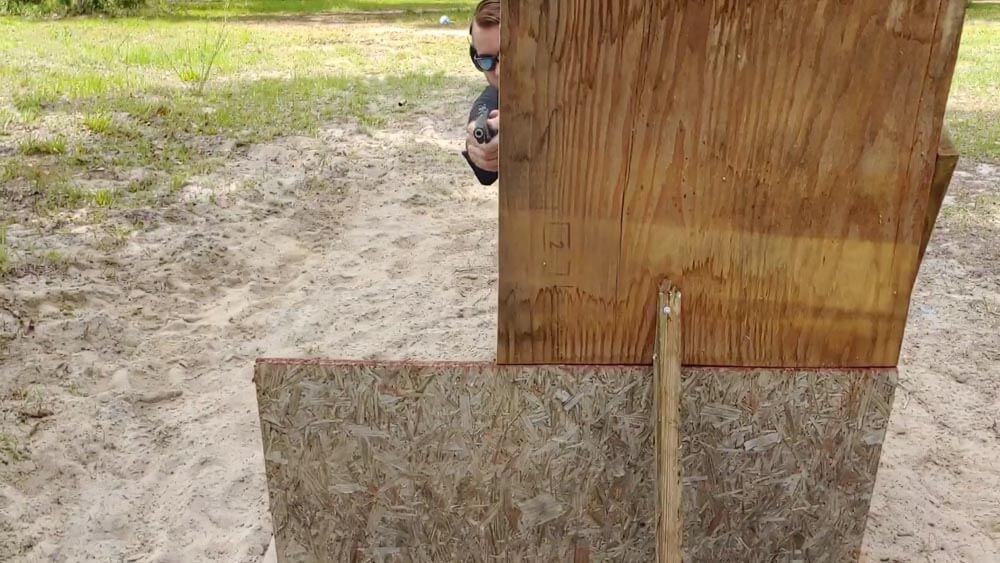When it comes to correct and comprehensive defensive training, nothing, no matter how simple it seems, can be taken for granted. This is a very good example. READ MORE
SOURCE: Springfield-Armory Armory Life, by Travis Pike
You would think something like using cover would be easy, and self-explanatory. Just get behind it and avoid getting shot — simple, right? Well, yes, but let’s look at the process of using cover and talk about how to use cover to its maximum potential.
Cover vs. Concealment
Concealment is a barrier that prevents an enemy from seeing you. Cover is a barrier that prevents an enemy from shooting you. Concealment is more common and bullets will often zip right through it. While your average car is mostly concealment, the engine area makes good cover. Things like walls, doors, and furniture are rarely suitable as cover. You need thick wood like a powerline pole, a concrete column, or something made of thick, layered metal.
If you are wondering how to find cover start looking now. Make it an exercise to find and identify effective cover when you are out and about in your normal everyday life. You’ll learn how to identify cover and you’ll be ready in case something pops off.
Step 1: Establish Proper Standoff
Standoff is the distance between you and the barrier you are using for cover. The rule of thumb is roughly two arm’s lengths from cover. There are a few reasons for this. First, the extra distance from the cover allows you to essentially pie the cover, and this keeps the maximum amount of cover between you and your target.
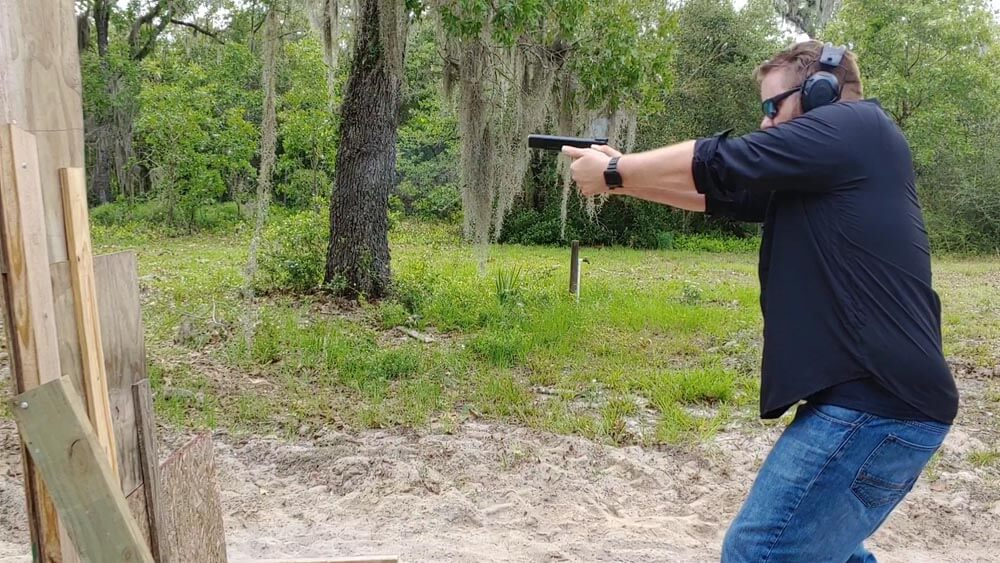
If you stick too close to your target you won’t maximize coverage. You could also run into issues with an opponent’s rounds striking the cover and causing splatter from their bullets as well as the cover itself. Catching some of that splatter can result in an easily preventable injury. Additionally, if you are too close and start firing you could send debris and dirt up in the air that can distract and potentially blind you.
Having the proper standoff from your target will also allow you to maintain better situational awareness and to have better peripheral vision. You’ll also have more room to reload and fix potential malfunctions. Using cover to rest your weapon is not advised and works better in three gun competition than a gunfight. Unless your weapon is belt felt you might want to keep it from resting on cover.
In a situation where an opponent is above you, it’s advised to get closer to your cover. This allows you to present less of a target to your opponent.
Step 2: Maximize Your Cover
Cover saves lives, so make use of it. When engaging your opponent expose as little of your body as necessary. You should lean out from the waist, and only lean out far enough from cover to put your front sight on your target. Hide whatever you can possibly hide when trying to take your shot.
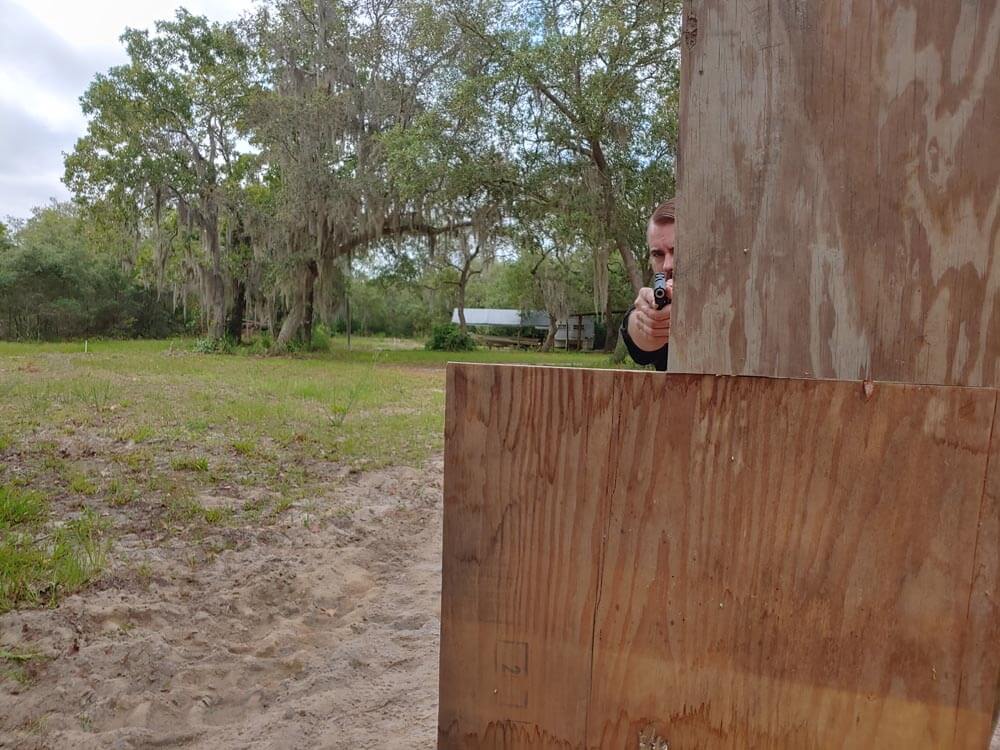
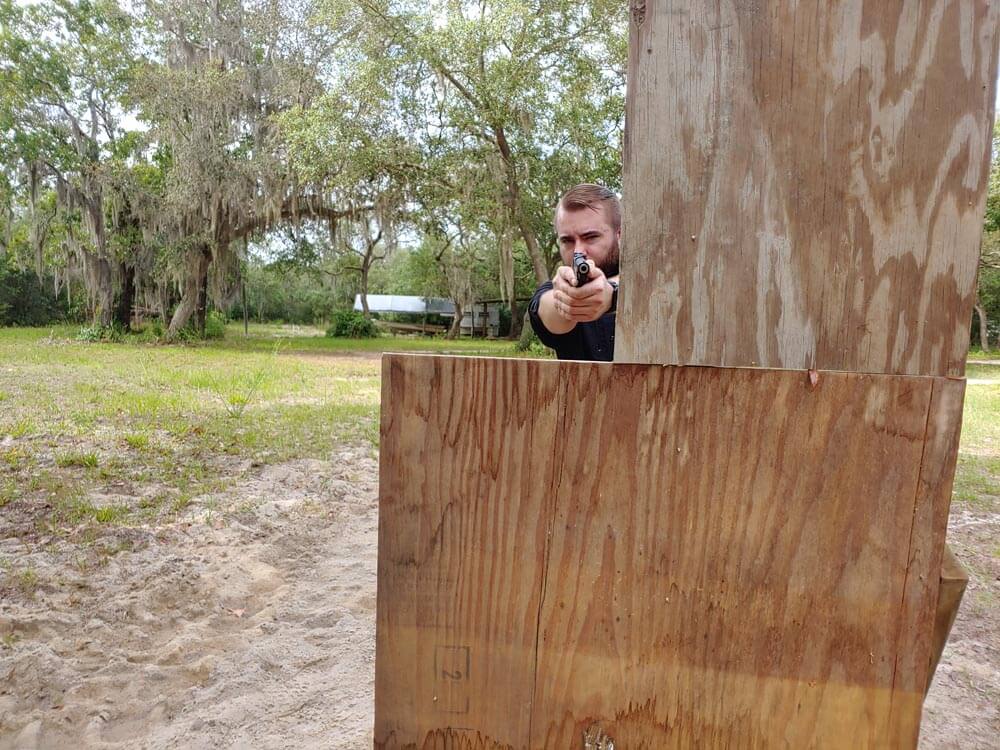
If possible, lean out and shoot from around your cover. Shooting over your cover exposes more of your head and makes you a bigger target.
Step 3: Be Unpredictable
Predictability and complacency go hand in hand with each other. If you are dipping behind cover, try to present yourself from a different angle the next time you break cover. Being predictable allows your opponent to simply wait and play whack the gunfighter. Break cover from a lower position, or from a higher position, or from the complete opposite side.
Step 4: Account for Sight Offset
Look at your gun. How high are the sights above the bore? With a handgun it’s just a little above, while with an AR, it’s quite a bit. Regardless, you have to account for your sights being taller than your bore. Ensure your barrel is clearing cover before you fire. This was something we ran into with new Marines quite a bit when teaching the basics of battleground micro cover. Many would be striking something nearly directly in front of them because their ACOG was higher than the barrel.
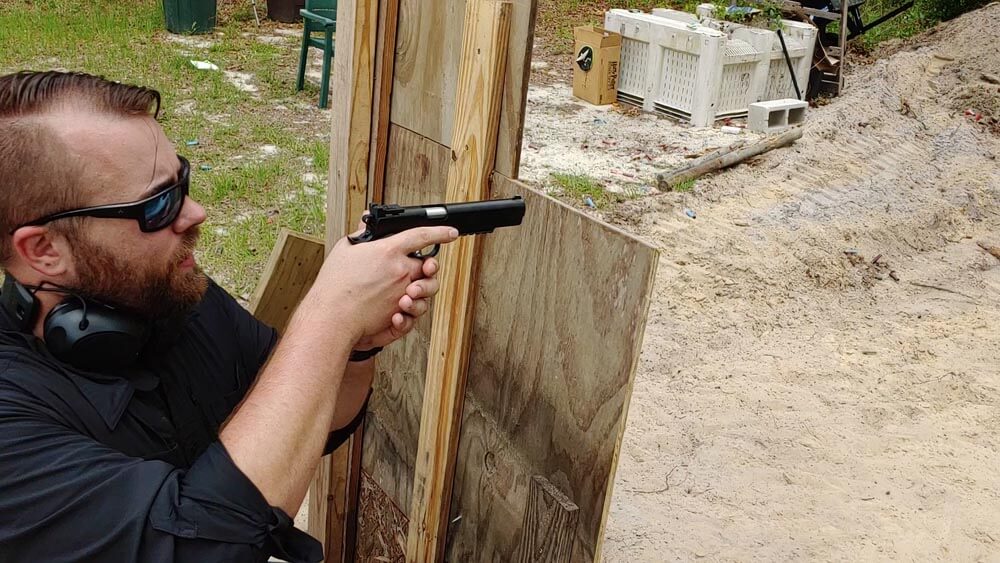
Staying Covered
This is the basics of using cover and from here the next step is getting out and practicing the basics. Your cell phone and its front-facing camera is an excellent tool you can use to see if you are using cover effectively. You can see yourself and obtain real-time feedback. As you utilize that feedback and continue training, you’ll find yourself becoming more comfortable and using cover to its maximum effect.
See the complete article here, plus VIDEO
Springfield Armory® recommends you seek qualified and competent training from a certified instructor prior to handling any firearm and be sure to read your owner’s manual. These articles are considered to be suggestions and not recommendations from Springfield Armory. The views and opinions expressed do not necessarily reflect the views and opinions of Springfield Armory.
TRAVIS PIKE is a former Marine Machine gunner who served with 2nd Bn 2nd Marines for 5 years. He deployed in 2009 to Afghanistan and again in 2011 with the 22nd MEU(SOC) during a record-setting 11 months at sea. He’s trained with the Romanian Army, the Spanish Marines, the Emirate Marines, and the Afghan National Army. He serves as an NRA certified pistol instructor and pursues a variety of firearms based hobbies.


